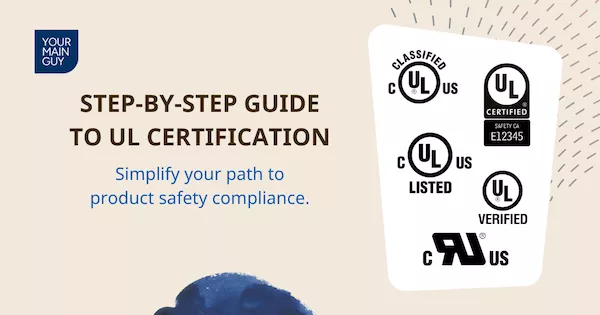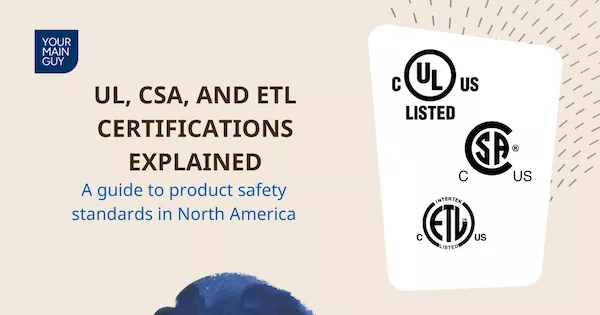The Cost of Non-Compliance: Case Studies of Product Safety Failures in North America
Product safety failures in North America can have devastating consequences. Learn from case studies like Mattel, Samsung, and Takata to understand the true cost of non-compliance and how to maintain product safety.
Product safety compliance isn't just a regulatory checkbox—it's a fundamental business imperative that can make or break companies. In North America, where consumer protection laws are among the most stringent globally, the cost of non-compliance can be devastating. The U.S. Consumer Product Safety Commission (CPSC), Food and Drug Administration (FDA), and Health Canada maintain strict oversight of product safety, yet companies sometimes fail to meet these standards, often with catastrophic consequences.
Understanding why companies falter in maintaining safety standards reveals a complex interplay of factors: cost-cutting measures, supply chain complexity, inadequate quality control, and sometimes simple oversight. However, the price of these failures far exceeds any short-term savings. Through examining several notable cases, we can understand the true cost of non-compliance and extract valuable lessons for maintaining product safety in today's complex manufacturing and distribution landscape.
How Did the 2007 Mattel Toy Recall Reshape the Industry?
The summer of 2007 became a watershed moment for the toy industry when Mattel, one of the world's largest toy manufacturers, announced a series of recalls affecting millions of toys. The crisis centered on two major safety issues: lead paint in various toy lines and small magnets that could detach from others. The scope was staggering—nearly 19 million toys were recalled globally, with North America bearing the brunt of the impact.
The root cause traced back to supply chain oversight failures. Mattel had outsourced production to Chinese manufacturers, who had further subcontracted to suppliers using lead paint to cut costs. Despite Mattel's existing quality control measures, these unsafe products made it to market, revealing critical gaps in supply chain monitoring.
The immediate financial impact was severe. Mattel spent over $110 million on recall-related costs alone, including:
- Product recovery and replacement
- Testing and certification programs
- Consumer outreach and communication
- Legal fees and settlements
The stock market's reaction was swift and harsh. Mattel's shares dropped 18% in the weeks following the recall announcements, wiping out billions in market capitalization. Holiday sales that year plummeted, with many parents avoiding Mattel products entirely.
The long-term implications proved even more significant. Mattel had to completely overhaul its supply chain management:
- Implementing rigorous new testing protocols
- Reducing the number of approved manufacturers
- Establishing direct oversight of paint suppliers
- Creating new safety verification procedures
The ripple effects transformed the entire toy industry. The crisis led to the Consumer Product Safety Improvement Act of 2008, which established stricter standards for children's products and heavier penalties for violations.
Why Did the Samsung Galaxy Note 7 Become a Cautionary Tale?
The Samsung Galaxy Note 7 saga of 2016 stands as one of the most expensive product safety failures in consumer electronics history. What began as isolated reports of phones catching fire quickly escalated into a global crisis that cost Samsung $5.3 billion and immeasurable reputational damage.
The initial problem stemmed from an aggressive design that compressed the battery into too small a space, leading to short circuits. Samsung's first response—replacing the batteries with ones from a different supplier—proved inadequate when the replacement phones also began failing.
The financial impact broke down into several categories:
- Direct recall costs: $2.3 billion
- Lost sales: $3 billion
- Marketing and brand rehabilitation: Hundreds of millions
- Customer compensation programs
- Environmental disposal costs
The crisis deepened when airlines worldwide banned the device, creating unprecedented logistics challenges and negative publicity. Videos of phones smoking or catching fire went viral, creating a PR nightmare that would haunt Samsung for years.
The company's market share in the smartphone sector dropped significantly, with many consumers switching to competitors like Apple and Google. The timing couldn't have been worse, as the Note 7 was meant to compete with Apple's iPhone 7.
However, Samsung's response ultimately became a masterclass in crisis management:
- Complete transparency about the problem
- Swift action to recall all devices
- Comprehensive investigation into the cause
- Implementation of the "8-Point Battery Safety Check"
- Public accountability from top executives
The incident revolutionized battery safety protocols across the industry and led to more rigorous testing standards for all manufacturers.
What Lessons Can Be Learned from the Takata Airbag Crisis?
The Takata airbag recall stands as the largest automotive safety recall in history, affecting roughly 67 million airbags across dozens of vehicle makes and models. The crisis emerged when it was discovered that Takata's airbag inflators could degrade over time, especially in humid conditions, potentially causing them to explode during deployment.
What made this case particularly egregious was evidence that Takata had known about the potential problems for years but failed to address them adequately. This delay in action led to:
- Multiple deaths and hundreds of injuries
- Criminal charges against executives
- $1.2 billion in settlements
- The company's eventual bankruptcy in 2017
The financial impact extended far beyond Takata itself. Automakers faced billions in recall costs:
- Honda: Over $5 billion in recall expenses
- Toyota: $4.2 billion
- Ford: $2.7 billion
- Other manufacturers: Collectively billions more
The ripple effects through the automotive supply chain were unprecedented. The incident:
- Forced automakers to find alternative suppliers
- Led to industry-wide reviews of supplier qualification processes
- Created new standards for airbag testing and validation
- Generated stricter requirements for safety-critical component documentation
The crisis also exposed weaknesses in the recall system itself, as many affected vehicles remained unrepaired years later, leading to ongoing risk and liability.
Why Did Blue Bell's Listeria Outbreak Nearly Destroy the Company?
The 2015 Blue Bell ice cream listeria outbreak provides a stark example of how food safety failures can threaten even century-old brands. The crisis began with isolated contamination reports but quickly escalated when FDA inspections revealed serious safety violations across multiple facilities.
The outbreak resulted in:
- Three deaths and multiple illnesses
- Complete shutdown of all production facilities
- Recall of every product on the market
- Layoffs of over 1,450 employees
- Temporary closure of 250 distribution centers
The financial impact was devastating:
- $850 million in lost sales and recall costs
- $125 million penalty paid to private equity investor
- Millions in facility cleanup and renovation
- Ongoing monitoring and compliance costs
Beyond the immediate crisis, Blue Bell faced a longer-term challenge: rebuilding consumer trust. The company had to:
- Completely overhaul its safety protocols
- Implement new testing procedures
- Retrain all employees
- Establish new cleaning and sanitization processes
- Create more robust documentation systems
The incident changed food safety practices across the ice cream industry, leading to:
- Enhanced environmental monitoring programs
- More frequent testing requirements
- Stricter cleaning validation procedures
- Better traceability systems
What Makes Modern Compliance Programs Successful?
The lessons from these case studies point to several critical elements of successful compliance programs:
Preventive Measures
- Regular risk assessments
- Comprehensive supplier audits
- Robust testing protocols
- Employee training and engagement
- Clear documentation requirements
Cultural Elements
- Leadership commitment to safety
- Open communication channels
- Employee empowerment to report issues
- Regular safety reviews and updates
- Recognition for safety initiatives
Technology Integration
- Real-time monitoring systems
- Automated quality control
- Digital documentation management
- Predictive analytics for risk assessment
- Supply chain visibility tools
The case studies examined here reveal a consistent pattern: the cost of non-compliance far exceeds the investment required for proper safety measures. Companies that survived their safety crises did so through:
- Swift and decisive action
- Complete transparency
- Comprehensive reforms
- Long-term commitment to change
Looking forward, several trends are shaping the future of product safety compliance:
- Increasing regulatory scrutiny
- Growing consumer awareness and demands
- Advanced technology for monitoring and prevention
- Greater supply chain transparency requirements
- Enhanced traceability expectations
The message is clear: in today's connected world, product safety isn't just about avoiding recalls—it's about maintaining trust, protecting consumers, and ensuring business sustainability. Companies must view compliance not as a burden but as a fundamental component of their business strategy and brand promise.




